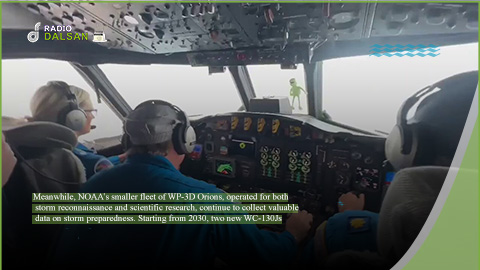Hurricane Melissa's Intensity Triggers Early Return of U.S. Reconnaissance Aircraft

Hurricane Melissa Forces Early Return of U.S. Weather Reconnaissance Aircraft
In the face of Hurricane Melissa's immense strength, U.S. Air Force WC-130J Weatherbirds from the 53rd Weather Reconnaissance Squadron (WRS) and National Oceanic and Atmospheric Administration (NOAA) aircraft have been forced to abandon their planned missions ahead of schedule. Over the past few days, weather reconnaissance aircraft have been operating at an extremely high rate to gather critical information on the storm, which poses a severe threat to Caribbean communities, including the imminent danger of destruction to several islands in the region.
The 53rd WRS, alongside civilian-operated NOAA WP-3D Orions, is tasked with collecting crucial storm data by flying directly into hurricanes, including their "eye." By utilizing specialized aircraft sensors and deploying dropsondes, the crews onboard these aircraft are able to collect real-time data on various storm parameters. This information is then relayed to the National Hurricane Center (NHC), where it plays an essential role in predicting the storm's path and intensity, as well as providing recommendations on evacuation and sheltering measures.
On October 28, 2025, just hours before Hurricane Melissa made landfall in Jamaica, the 53rd WRS took to social media to announce that one of their aircraft, under the mission callsign TEAL 75, had encountered severe turbulence while flying near the storm’s eye. As per safety regulations, any aircraft that exceeds stress limits must be thoroughly inspected for damage before further operations can resume. Consequently, TEAL 75 was forced to terminate its mission.
The 53rd Weather Reconnaissance Squadron’s statement read, “A 53rd Weather Reconnaissance Squadron crew (call sign TEAL 75), known as the Air Force Reserve Hurricane Hunters, is returning to its forward operating location in Curaçao after encountering heavy turbulence today while entering the eye of Hurricane Melissa, a Category 5 storm.” The turbulence caused the aircraft to experience forces greater than usual, though it does not necessarily indicate damage. Nonetheless, standard protocol dictates that an inspection must take place before the aircraft can safely resume operations.
Reports from both NOAA and the Air Force Reserve Hurricane Hunter aircraft confirmed that the storm's intensity had caused the aircraft's early return. The National Hurricane Center’s daily report on October 27, 2025, indicated that the central pressure of Hurricane Melissa had fallen to near 908 mb, with dropsondes released in the northeastern eyewall supporting an initial intensity of 145 knots. However, severe turbulence in the southwest eyewall forced NOAA aircraft to leave the storm early.
As Hurricane Melissa barreled toward Jamaica, Haiti, the Dominican Republic, Eastern Cuba, the Southeast Bahamas, and the Turks and Caicos Islands, NOAA issued life-threatening warnings. Their October 28 report included a dire warning for Jamaica: “THIS IS AN EXTREMELY DANGEROUS AND LIFE-THREATENING SITUATION! Take cover immediately! Catastrophic winds with total structural failure are likely near the path of Melissa’s center. The remainder of the island is expected to experience catastrophic flash flooding, landslides, and destructive winds, resulting in widespread infrastructure damage, power and communication outages, and isolated communities. Life-threatening storm surge and damaging waves are expected along the southern coast.”
Meanwhile, NOAA’s smaller fleet of WP-3D Orions, operated for both storm reconnaissance and scientific research, continue to collect valuable data on storm preparedness. Starting from 2030, two new WC-130Js will replace the WP-3Ds currently in use. These new Weatherbirds will also have the added capability of deploying unmanned aerial vehicles during flight. This feature is likely to be added to the USAF fleet as well, enabling these aircraft to fly into even more dangerous storm conditions without risking the safety of crew members.
Since the first Hurricane Hunter missions, there have been a number of incidents where aircraft had to return early due to hazardous conditions, but the last fatality of a Hurricane Hunter mission occurred in 1974. Remarkably, since then, no WC-130s of any variant have been lost, although some have encountered dangerous conditions, with successful recoveries following each incident.
